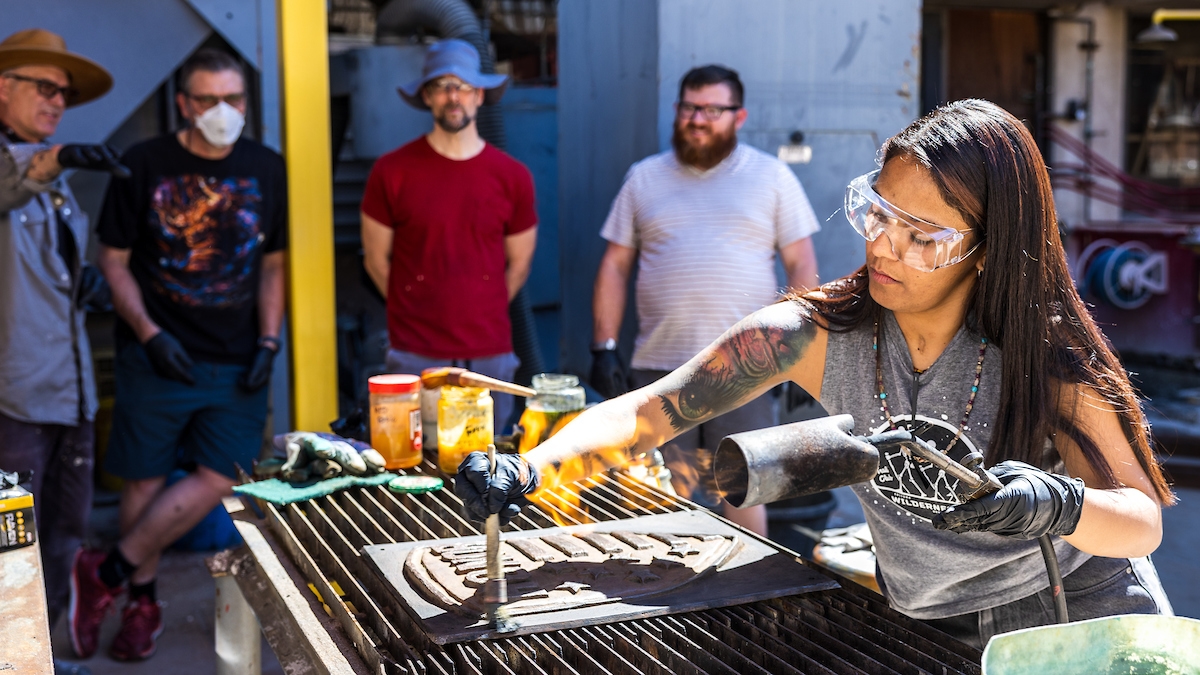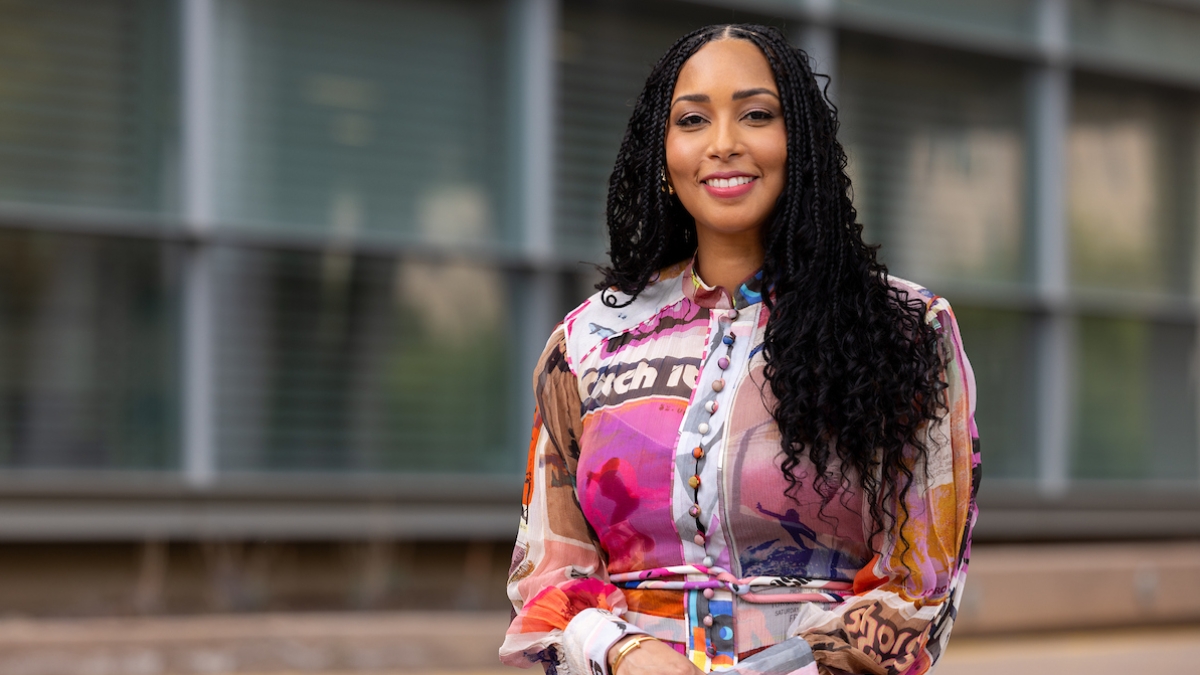Curating a pandemic
ASU team leads effort to archive effect of COVID-19 on everyday lives

From ancient cave paintings depicting epic hunts to modern-day Instagram posts boasting avocado toast brunches, it’s a natural human inclination to document our lives — one that becomes even stronger when we are faced with a shared global crisis.
Perhaps no one knows that better than historians. Last Friday, after President Trump declared a national emergency amid the swift spread of the novel coronavirus, Arizona State University Associate Professor Catherine O’Donnell emailed colleagues in the public history program at the School of Historical, Philosophical and Religious Studies asking if there was something they could do to connect their students as historians to this moment.
“A lightbulb went on,” said Associate Professor Mark Tebeau, an urban, public and digital historian who heads the public history program and read through O’Donnell’s email with mounting enthusiasm.
Over the weekend, Tebeau assembled a website, enlisted the aid of graduate students and mobilized a global network of scholars — including colleagues at Northeastern University in Boston and George Mason University in Virginia. “A Journal of the Plague Year: An Archive of COVID-19” is now up and running, already with more than 160 contributions from individuals around the world and thousands of unique site views.
The inspiration for the website’s name came from Daniel Defoe’s 1722 novel, “A Journal of the Plague Year,” which documented the experience of the bubonic plague as it ravaged London in the year 1665. Tebeau used Omeka — a free, open source web-publishing platform used to teach curation — to host the site. While its origin is academic, with grad students and scholars doing much of the curating, anyone can contribute.
“In a sense, this is kind of guerilla history,” Tebeau said. “We want stories from everyone: those who are not as digitally active, older folks who are at the greatest risk, communities of color which may be impacted differently than others. The best archives are those which are most representative.”
One of Tebeau’s own contributions is an audio message sent by ASU President Michael Crow to faculty, staff and students updating them on the university’s response to the crisis and advising them to “stay frosty,” a line from the 1986 film “Aliens.”
Over time, and once social distancing is no longer at the top of everyone’s priority list, Tebeau hopes to engage writers, artists and community members in public programming and maybe even host a conference related to the project.
ASU Now asked Tebeau, O’Donnell and School of Historical, Philosophical and Religious Studies Director Richard Amesbury to answer some questions about what makes this archival project special and how to contribute.
Question: How is this archive unique?
Tebeau: What makes this such a good historical document is that it goes where the crowds drive it, through social media and existing scholarly networks, both at ASU and around the country. It’ll take the direction that people who contribute want it to take. And in some sense, that’s also how history is written. There’s this old saw that history is written by the victors. Actually, history is produced by people who create records of material that we can interrogate later on. This act of curation is a first blush at making history. And the beauty of crowdsourcing is that it let lots of people contribute with their different perspectives.
The homepage of "A Journal of the Plague Year," built by a team of ASU historians.
Q: Does our modern-day ability to crowdsource a historical archive make it richer than something like Defoe’s novel, which only documented the plague from one perspective?
Tebeau: I’m not sure it makes it richer; it makes it different. The ways in which we’ve experienced these moments in the past is through artists and writers. Then the emergence of mass culture, public culture, began to give us a wider array of voices. Now in the internet age, we have an even wider array of voices expressed in the world. We now take more photos than we’ve ever taken. But one of the challenges of the digital age is — how do we collect those things? There’s so much. So in some ways, we spend less time making sense of everything we’re creating (photos, memes, etc.). What this archive does is ask people, “How is your everyday life being shaped in this moment?” It allows us to get a closer look at the diversity of human experiences.
Q: Why is student involvement so important?
O’Donnell: When students imagine the materials someone in the future would need to understand our current moment, they are thinking and acting like historians. They both analyze and empathize. I think they are also taking pleasure in understanding themselves as intentional observers rather than only as unwilling participants, but that is the case for everyone who contributes, not only for our history majors.
Tebeau: It gets them to think about the role each contribution plays, and to think about the historic process and the way in which different types of resources tell different stories. A personal photo will tell a different story than a screenshot of Instagram or a Twitter meme from someone’s phone or computer. So it gets them thinking about the choices they’re making as far as what items they include and the kind of story that will tell. We’re asking our students to think deeply about what it means to be a curator.
Q: What kind of material are you looking for?
Tebeau: I suspect if I go through the database as it exists now, probably a quarter of it is pictures of empty shelves. And I want people to move beyond the empty shelves and over-the-top hoarding. I want to see the more common things that people are doing. We want to get to that next level of engagement, to see how this crisis is shaping people’s lives and how we can represent that in this archive. One of the photos I contributed is of my son visiting colleges a couple weekends ago, at a time when we were still trying to figure out whether he should even have gone or not. So we’re looking for everything from the mundane to the extraordinary.
Q: How does one determine what is worthy of documentation?
Amesbury: The historical significance of one’s own times is always difficult to assess. We tend to be too close to the events of our own lives to achieve much perspective on them. But we do have access to something future historians might not — namely the texture of our own immediate experience, including the very disorientation and uncertainty characteristic of being caught up in events beyond our control. A Journal of the Plague Year is a chronicle of the particularities of the present which might otherwise be forgotten — internet memes, empty classrooms, shelves bare of everything but cream of mushroom soup. This project — like the phenomena it seeks to track –—is completely fluid, and we are at the very beginning stages. We welcome the involvement of anyone, anywhere in the world, who would like to contribute to the historical record of these unprecedented times.
Top photo: Kristin Mickelson, “New York City Taxi: Stop the Spread,” A Journal of the Plague Year: an Archive of CoVid19, accessed March 20, 2020, https://covid19.omeka.net/items/show/169.
More Arts, humanities and education

'Devils in the Metal': ASU vet leads iron cast workshop for former service members
Bruce Ward believes everyone has a symbol of strength or resilience, and they have an obligation to find it. His happens to be a paper crane in an ocean wave. “It’s the idea that we are the…

ASU English professor wins Guggenheim Fellowship for poetry
The awards — and opportunities — keep piling up for Safiya Sinclair, an associate professor in Arizona State University’s Department of English. In mid-April, Sinclair received one of 188 Guggenheim…

Designer behind ASU’s brand named newest Herberger Institute Professor
Bruce Mau, co-founder and CEO of the Chicago-based holistic design consultancy Massive Change Network, has joined Arizona State University’s Herberger Institute for Design and the Arts as its newest…
